Energy transition outlook: UK
The UK has a renewed focus on accelerating its energy transition and bold plans to create a clean energy superpower. But net zero by 2050 is not yet on course – what would shift the dial?
2 minute read
Lindsey Entwistle
Senior Research Analyst, Energy Transition

Lindsey Entwistle
Senior Research Analyst, Energy Transition
Lindsey provides analysis and insights into global policy, regulations and disruptive technologies.
Latest articles by Lindsey
-
Opinion
Energy transition outlook: UK
-
Opinion
Energy transition outlook: EU
-
Opinion
Our key takeaways from the Lisbon Energy Summit 2024
-
The Edge
The coming low carbon energy system disruptors
-
The Edge
How the world gets onto a 1.5 °C pathway
-
The Edge
Breakthrough technologies for the energy transition
Zoé Sulmont
Research Analyst, Energy Transition

Zoé Sulmont
Research Analyst, Energy Transition
Latest articles by Zoé
-
Opinion
Heating up: 2024 showcased the promise of geothermal energy
-
Opinion
Energy transition outlook: UK
Labour's victory in the 2024 UK general election shifted the political climate, with a renewed focus on speeding up the energy transition. But the UK is not yet on track for a net zero by 2050 scenario, with emissions expected to decrease by only 66% by 2035 – significantly less than the targeted 81% reduction.
What would propel the UK towards its bold net zero goals? How will demand sectors decarbonise – and what’s the outlook for oil and gas? How much hydrogen, carbon capture and renewables will be deployed?
Our latest energy transition outlook (ETO), from our Energy Transition Service, explores the progress made and obstacles to overcome on the road to net zero. The global ETO maps out four energy transition scenarios with increasing levels of ambition and investment, while the regional reports – now updated for 2024-2025 – delve into the detail at country level.
Access a complimentary extract from the UK edition by filling in the form at the top of this page. And read on for a short introduction to some of the key themes.
Accelerated green agenda in focus for Labour government despite missed targets
The new government plans to make the UK a clean energy superpower. As part of this, a target for 100% clean power by 2030 for domestic demand has been set.
However, our base case outlook continues to highlight the gap between ambitious targets and reality. Clean power will be achieved by 2039 – meeting this goal will require a rapid expansion of renewables, improving electricity grids and increased investments.
For a look at how heat pump installations, carbon capture volumes, hydrogen production and coal phase-out compare to targets fill in the form to read the report extract.
Electricity demand will more than double by 2050
Decarbonisation is a story of electrification. In 2025, electricity will be the cleanest ever with each unit emitting 136g of CO2 compared to 519g of CO2 in 2008.
Fossil fuels accounted for 38% of power supply in 2024 and are projected to decline to 19% by 2030. Wind, solar and nuclear power represent 51%, 8% and 12% of supply by 2030 respectively in our base case.
Wind capacity is expected to almost double by 2030 and triple by 2050 to reach nearly 100 GW.
How would a delayed energy transition scenario affect the outlook for oil demand? Read the report extract for more on this.
Mixed outlook for emerging tech
Hydrogen is losing momentum in the UK. The pace of progress, which is tied to allocation rounds, is slow. Nevertheless, carbon capture is scaling up, supported by the UK’s leading regulatory framework.
Small modular reactor development is stumbling, with generation capacity is projected at just 3 GW by 2050.
Get a closer look at the UK’s energy transition outlook
The full report features charts and analysis on emissions, carbon prices, EV adoption, fossil fuel demand and more. Fill in the form at the top of the page for a complimentary extract – which includes the key themes we’ll be looking out for in the year ahead.








